AI Tools for Regional Climate Data in Gardening
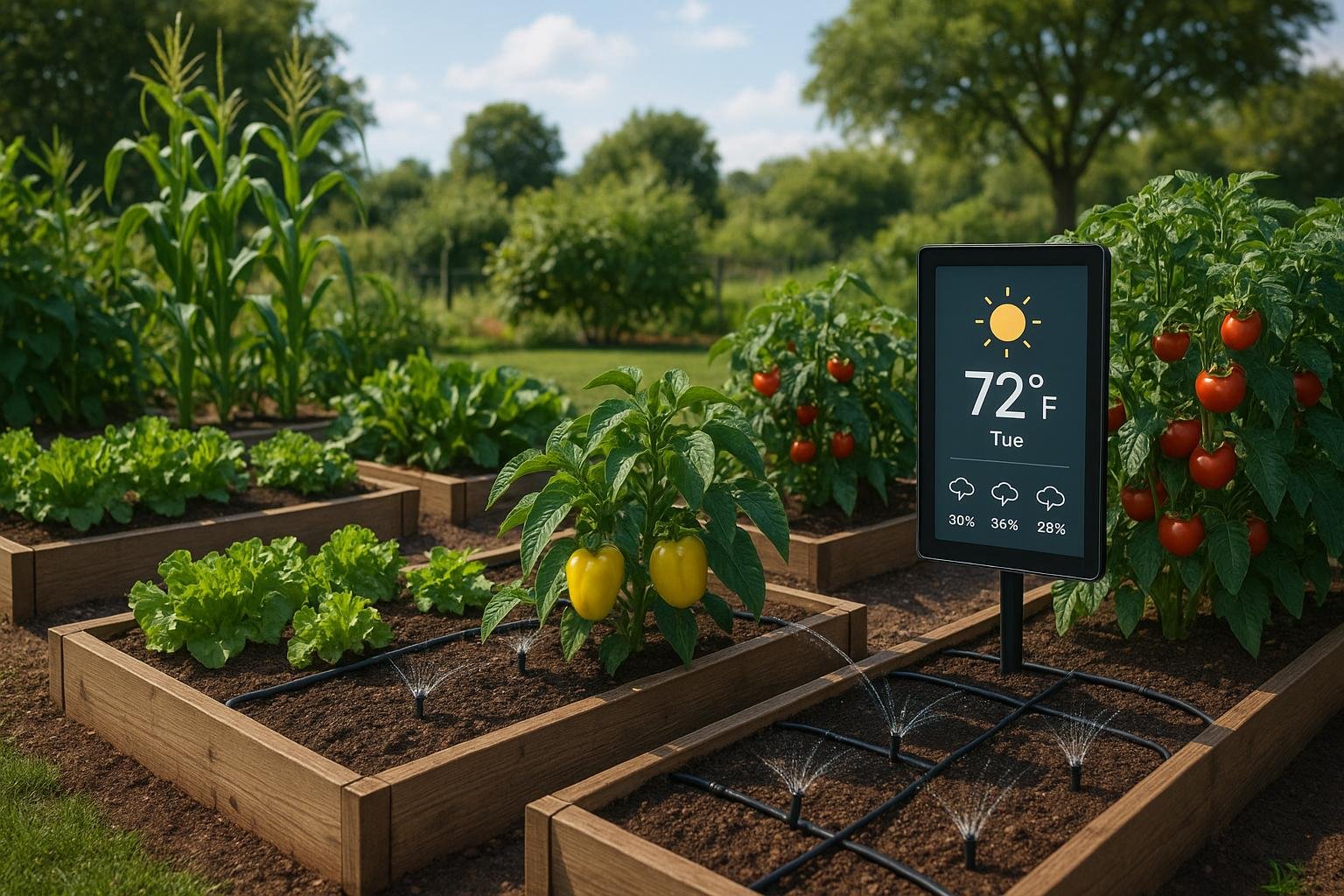
AI tools are revolutionizing gardening by using climate data to adapt to changing weather patterns. Here’s what you need to know:
- 67% of U.S. locations have shifted to warmer hardiness zones since 1951–1980, affecting plant choices.
- AI combines historical and real-time data to offer custom planting schedules, water-saving strategies (up to 50%), and pest predictions (85% accuracy).
- Tools like AIGardenPlanner, Climate Smart Gardening, and Farmonaut provide tailored advice based on local conditions, from soil health to microclimates.
- Sensors and weather data help gardeners optimize watering, choose climate-resilient plants, and prevent crop losses.
These tools simplify gardening, making it easier to grow plants that thrive despite unpredictable climates.
4 AMAZING AI Tools For Gardening & Plants! (100% FREE*)

Benefits of AI Tools for Regional Climate Data
AI tools transform regional climate data into practical gardening advice, offering powerful solutions for sustainable gardening. Here’s how they make a difference.
Custom Planting Recommendations
By analyzing regional weather forecasts, soil quality, and historical trends, AI tools provide planting advice tailored to specific locations. Unlike traditional zone-based recommendations, these tools incorporate factors like local weather patterns, soil types, and sunlight exposure. They even determine the best planting times by combining real-time and forecasted weather data with microclimate insights [3].
When selecting an AI gardening tool, prioritize features like comprehensive data integration and growth prediction capabilities [4]. These tools don’t just help you select the right plants - they also enable smarter irrigation and moisture monitoring.
Historical and Real-Time Data Integration
Combining historical weather trends with live data, AI tools allow gardeners to adapt their strategies in real-time. These systems monitor soil conditions and use weather forecasts to create customized irrigation schedules. This approach can cut water waste by up to 50% while ensuring plants get exactly what they need to thrive [6].
For example, a study in Brazil used AI to predict soybean yields across various regions, improving crop management efficiency [2]. This blend of past and present data empowers gardeners to make informed decisions about what to plant, when to plant, and where to plant [6].
Such insights are crucial for creating gardens that can adapt to changing climates.
Climate-Resistant Gardening
AI tools also help gardeners tackle extreme weather by recommending plant varieties and techniques suited to local conditions. They optimize planting and harvesting schedules to avoid risky periods and guide users toward crops that can handle regional challenges [1]. Farmers using AI solutions have reported a 15% boost in crop yields and a 20% drop in losses caused by extreme weather, while yield predictability has improved by up to 25% [8].
Additionally, AI-driven water management systems, such as those developed by CropX, have reduced water usage by 25% to 50% without sacrificing yields [5]. As gardening expert David Domoney explains:
"Climate-adaptive gardening might see a rise, responding to the challenges of climate change by using plants and techniques that can handle extreme weather conditions", [7].
Top AI Tools Using Regional Climate Data for Gardening
AI-powered platforms are reshaping how gardeners approach planting by combining weather patterns, soil conditions, and historical climate data. These tools help create gardens better suited to specific regional conditions.
AIGardenPlanner
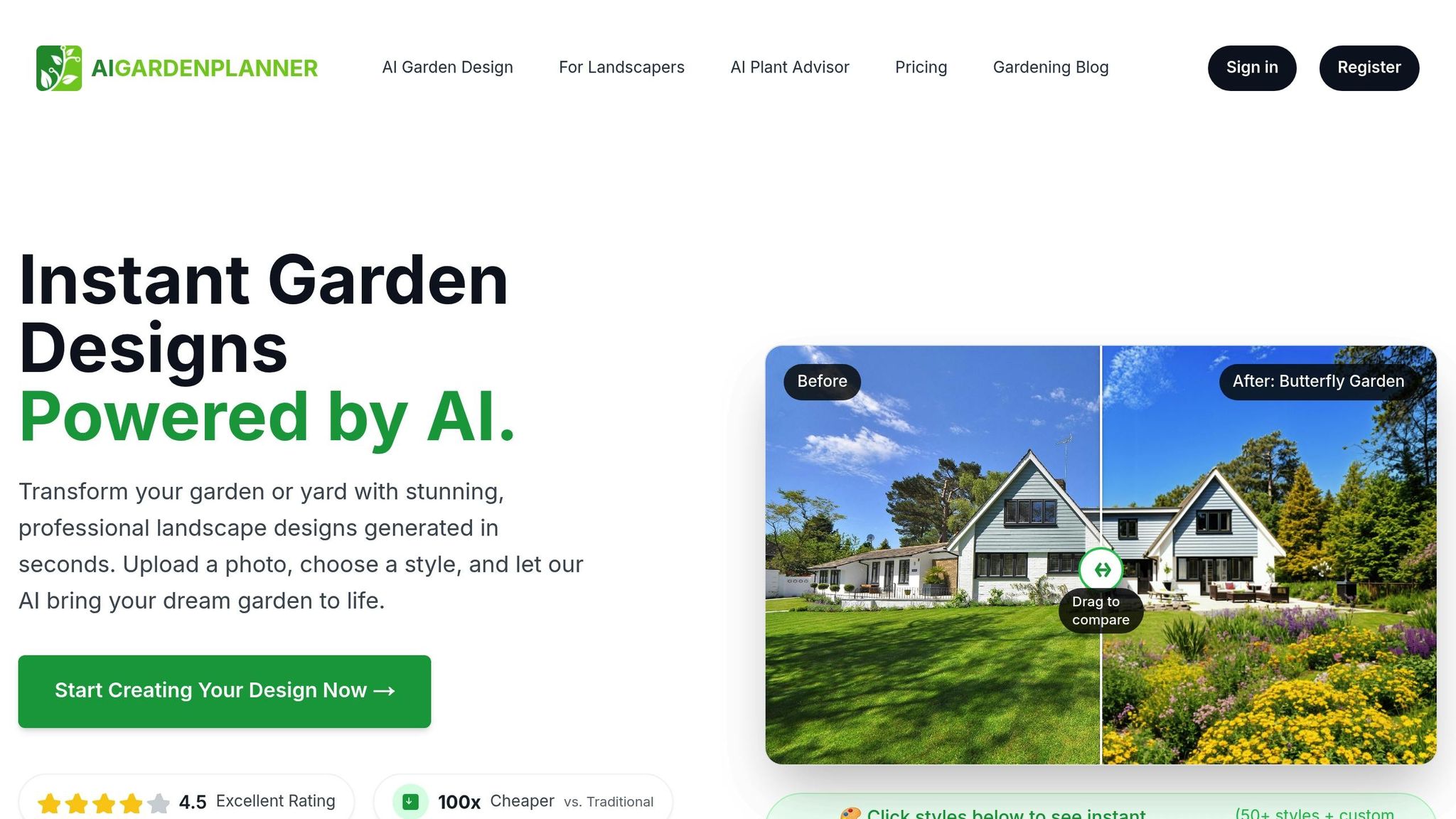
AIGardenPlanner uses its AI Plant Advisor to provide tailored plant recommendations. By analyzing local climate factors - like temperature, rainfall, and seasonal shifts - it helps gardeners design gardens that thrive in their specific environment. Users can even upload photos to get customized advice for their space.
The platform doesn't stop at recommendations. It offers detailed growing guides, including maintenance schedules tailored to local conditions. With over 50 garden styles to choose from, it ensures that gardeners can integrate local climate considerations seamlessly into their designs.
Climate Smart Gardening (UMass Amherst)

Developed by the University of Massachusetts Amherst, Climate Smart Gardening helps gardeners in the Northeast plan for climate-resilient gardens through 2060 [9]. This tool combines detailed climate projections with practical information on native plants that are available at local nurseries.
Matthew Fertakos, a graduate student in organismic and evolutionary biology at UMass Amherst, highlights the tool’s significance:
"We've been working on this for more than two years. People are getting excited about planting native species, but climate change is changing what can grow where and what will persist into the future. Unfortunately, there's not all that much publicly available information to help guide people when they're trying to decide what to plant." [10][11]
The tool's development involved surveying over 350 nurseries from Virginia to Ohio, mapping the availability of native species. Feedback from over 100 experts - including nursery owners, conservationists, and landscape managers - helped refine the plant lists to ensure they are practical and regionally relevant [9].
Jenica Allen, a senior research fellow at UMass Amherst, underscores the tool’s forward-looking approach:
"When we're thinking about climate change and the impact it is going to have on where species can grow, there's a paradigm of move, adapt or die. We're trying to avoid the die, and there is good evidence that moving is the key to survival. That's really the piece of the puzzle that this dataset is aiming to address, with home gardeners and landscape professionals as the audience." [10][11]
Farmonaut
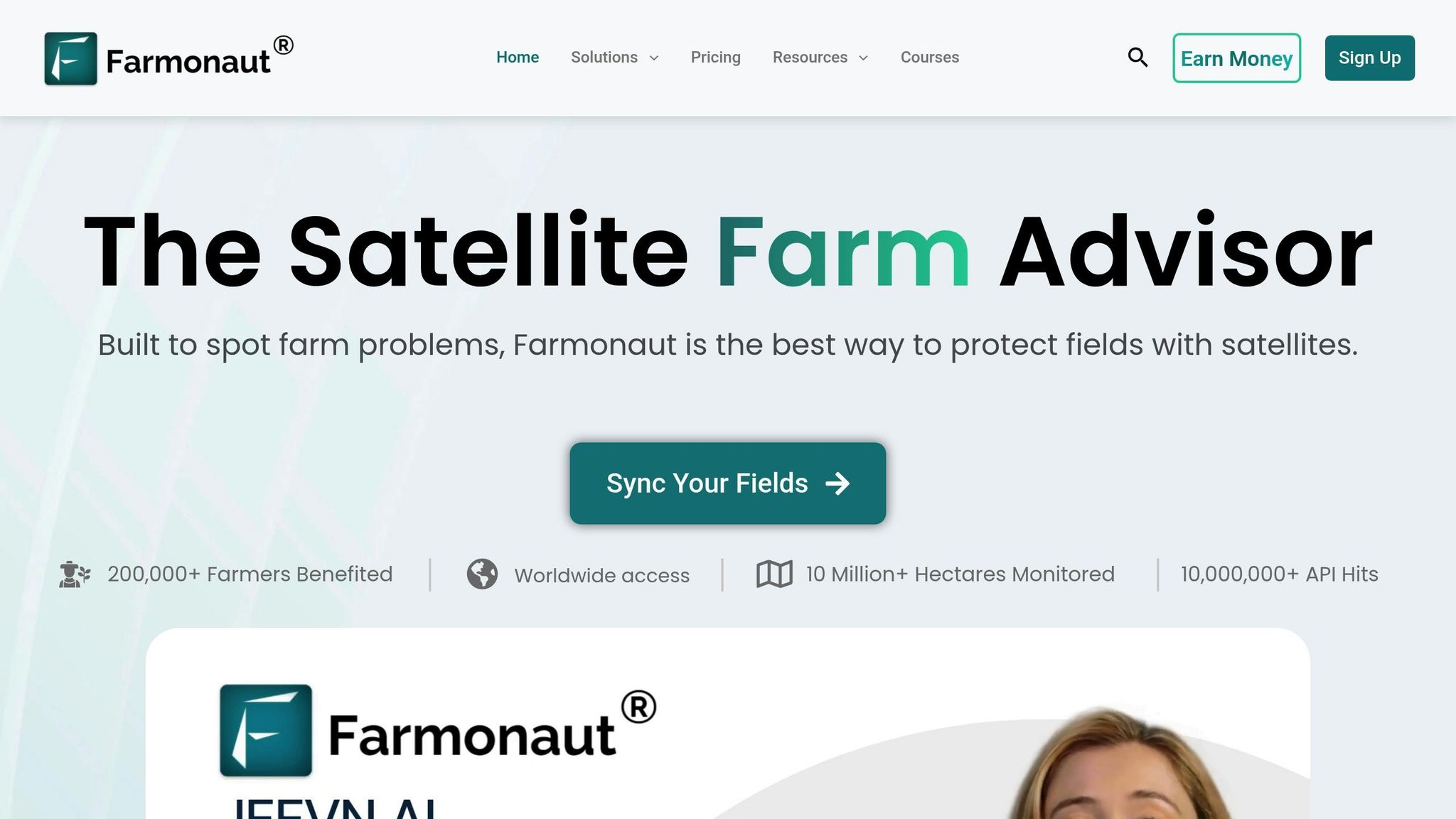
Farmonaut uses satellite data to provide detailed climate analysis and AI-driven insights. By analyzing historical yield data, current field conditions, and climate forecasts, it achieves over 90% accuracy in yield predictions [12]. The platform monitors more than 20 crop health parameters and integrates precision weather forecasting, historical climate trends, and risk assessments [12][13].
In pilot programs, Farmonaut’s precision tools have boosted crop yields by up to 30% [13]. Beyond yield predictions, it offers features like carbon footprint tracking, soil health management, and water conservation strategies [12].
What makes Farmonaut stand out is its real-time monitoring capabilities. Using satellite imagery and AI, it delivers localized forecasts, historical data insights, and soil fertility recommendations. This equips gardeners with the information they need to choose crops and plan planting schedules while addressing potential climate risks proactively [12].
sbb-itb-4d6a8dd
🚀 Ready to Reinvent Your Garden?
Join thousands of homeowners who have transformed their gardens using our AI design tool. Upload one photo to explore endless possibilities.
Get your AI garden designs →How AI Tools Process Regional Climate Data
AI tools transform raw climate data into practical gardening advice by blending diverse data sources with expert insights. This combination allows for recommendations tailored to specific regions and their unique growing conditions.
Collecting Climate Data
AI gardening tools pull climate data from multiple sources, including satellite imagery, ground-based weather stations, and historical climate records [12]. This layered approach creates a comprehensive picture of local growing environments.
- Satellite imagery offers real-time visuals to monitor vegetation health and track environmental changes over wide areas.
- Ground stations provide accurate, localized measurements of temperature, humidity, and rainfall patterns.
- Historical datasets reveal long-term climate trends, helping predict future conditions.
Together, these sources enable AI tools to provide highly localized weather forecasts and assess climate risks [12]. Instead of relying on broad regional predictions, gardeners receive precise guidance tailored to their specific microclimates.
AI algorithms also analyze satellite and drone imagery to evaluate crop health using metrics like NDVI (Normalized Difference Vegetation Index) [12]. This early detection system can flag issues like plant stress or nutrient deficiencies before they become visible to the naked eye.
| Traditional Methods | AI-Powered Climate Analysis |
|---|---|
| General forecasts with limited detail | Hyper-local forecasts using historical trends |
| Infrequent visual inspections | Real-time satellite and AI-driven analysis |
| Relies on experience and averages | Data-driven insights from multiple sources |
To further refine these insights, AI integrates real-time sensor data.
Using Sensor and Monitoring Data
AI gardening platforms incorporate IoT devices and smart sensors to collect live environmental data [12]. These sensors continuously monitor factors like soil moisture, temperature, light levels, and plant health [14], offering updates that traditional methods simply can't match.
For example, soil moisture sensors boast near-perfect accuracy and enable an 85% water conservation rate when paired with automated systems [16]. This helps gardeners avoid overwatering while protecting plants from drought stress.
Weather monitoring systems track variables such as precipitation, humidity, temperature shifts, wind speed, and solar radiation [16]. Soil temperature sensors, which measure ranges from -10°F to 122°F, are particularly critical as soil temperature directly impacts seed germination and plant growth [15].
In February 2025, Amanda Blum shared her experience using a Tempest weather station to understand her yard's microclimate. She paired it with ThirdReality Smart Soil Sensors to monitor soil humidity and connected these to a Hydrawise drip irrigation system. This setup, controlled via her phone, synced with local weather stations to adjust daily watering needs.
AI tools also monitor soil pH, which typically needs to fall between 5.5 and 7.5 for optimal plant growth [15]. These readings guide decisions on soil amendments and nutrient management.
By combining sensor data with expert knowledge, AI platforms deliver even more accurate and actionable advice.
Working with Experts
AI platforms collaborate with nurseries, landscapers, and climate scientists to ensure their recommendations are practical and effective [17]. This partnership allows AI systems to identify patterns in climate data and translate technical findings into straightforward, actionable advice.
Experts also help AI systems improve over time. Climate scientists contribute analysis of long-term trends, while nursery professionals provide insights into how plants perform under specific conditions.
For instance, in Uttar Pradesh, India, AI-driven precision irrigation for pea farming used real-time weather, soil, and crop data alongside expert input. This approach led to significant water savings and higher productivity [2]. Similarly, in Brazil, AI models that integrated weather and soil data with expert advice accurately predicted soybean yields across major farming regions [2].
This collaborative method ensures AI tools account for local conditions, seasonal changes, and regional plant varieties. By marrying cutting-edge technology with horticultural expertise, these platforms deliver reliable advice tailored to gardeners' needs.
Conclusion: Using AI for Smarter Gardening
AI tools are changing the way American gardeners approach planting in a changing climate. By breaking down complex climate data, these tools create tailored strategies that help with everything from choosing the right plants for your area to predicting yields with over 90% accuracy[12]. They can generate personalized planting calendars based on local conditions, recommend garden layouts that make the most of companion planting, and even catch plant health issues early on[18]. This level of detail extends into areas like irrigation and pest control, making gardening more efficient and effective.
In a country as geographically diverse as the U.S., AI tools address region-specific challenges with precision. They combine historical data with real-time sensor inputs to set watering schedules, predict pest issues, and suggest plants that can withstand local climate conditions. Improved weather forecasting - up to 25% more accurate[19] - gives gardeners better insights for planning their growing seasons, whether they’re dealing with drought, heavy rainfall, or unpredictable temperature swings.
For both beginners and seasoned gardeners, these tools make navigating climate challenges easier. Whether you're managing the intense heat of Texas, the steady rain of the Pacific Northwest, or the unpredictable weather of the Midwest, AI tools simplify the process. They help create gardens that can adapt and thrive despite shifting climate patterns, offering a way to plan ahead using long-term data and insights. This technology is becoming an essential ally in maintaining productive and resilient gardens.
FAQs
How can AI tools help gardeners by using regional climate data?
AI tools take a deep dive into regional climate data - things like temperature, rainfall, frost dates, and soil conditions - to suggest plants that are well-suited to your area. By factoring in these local environmental details, they can help ensure plants not only survive but also thrive.
Beyond plant recommendations, these tools analyze climate trends to anticipate potential challenges, such as pest outbreaks, and fine-tune care routines. From watering schedules to fertilization plans, they make gardening more efficient and better suited to the specific needs of your environment.
How can AI help improve water usage and predict pests in gardening?
AI is transforming gardening by offering smarter solutions for water management and pest control. When it comes to water usage, AI processes real-time data to fine-tune irrigation schedules. This ensures plants receive just the right amount of water, cutting down on waste and potentially slashing water use by up to 50%. It can also keep an eye on water quality, flagging any issues like contamination before they become a problem.
On the pest control front, AI analyzes factors like climate patterns, pest life cycles, and plant health to predict potential outbreaks. This gives gardeners a chance to act early, reducing plant damage and limiting the reliance on chemical pesticides. By integrating these technologies, gardening becomes not only more efficient but also kinder to the environment.
How do AI tools help gardeners choose plants suited to their local climate?
AI tools are becoming a game-changer for gardeners, helping them make informed planting choices by analyzing regional climate data. These tools take into account critical factors like temperature, rainfall, and soil type to recommend plants that are well-suited to thrive in specific conditions.
Take AIGardenPlanner, for instance. This tool uses advanced AI to offer tailored plant suggestions based on your location, climate, and personal preferences. With insights like these, gardeners can design flourishing gardens that align with their local environment, making them both productive and environmentally friendly.
Related posts
Related Articles

How AI Maps Pest Trends for Better Control
Explore how AI is revolutionizing pest control with accurate predictions, eco-friendly practices, and smarter pest management strategies.
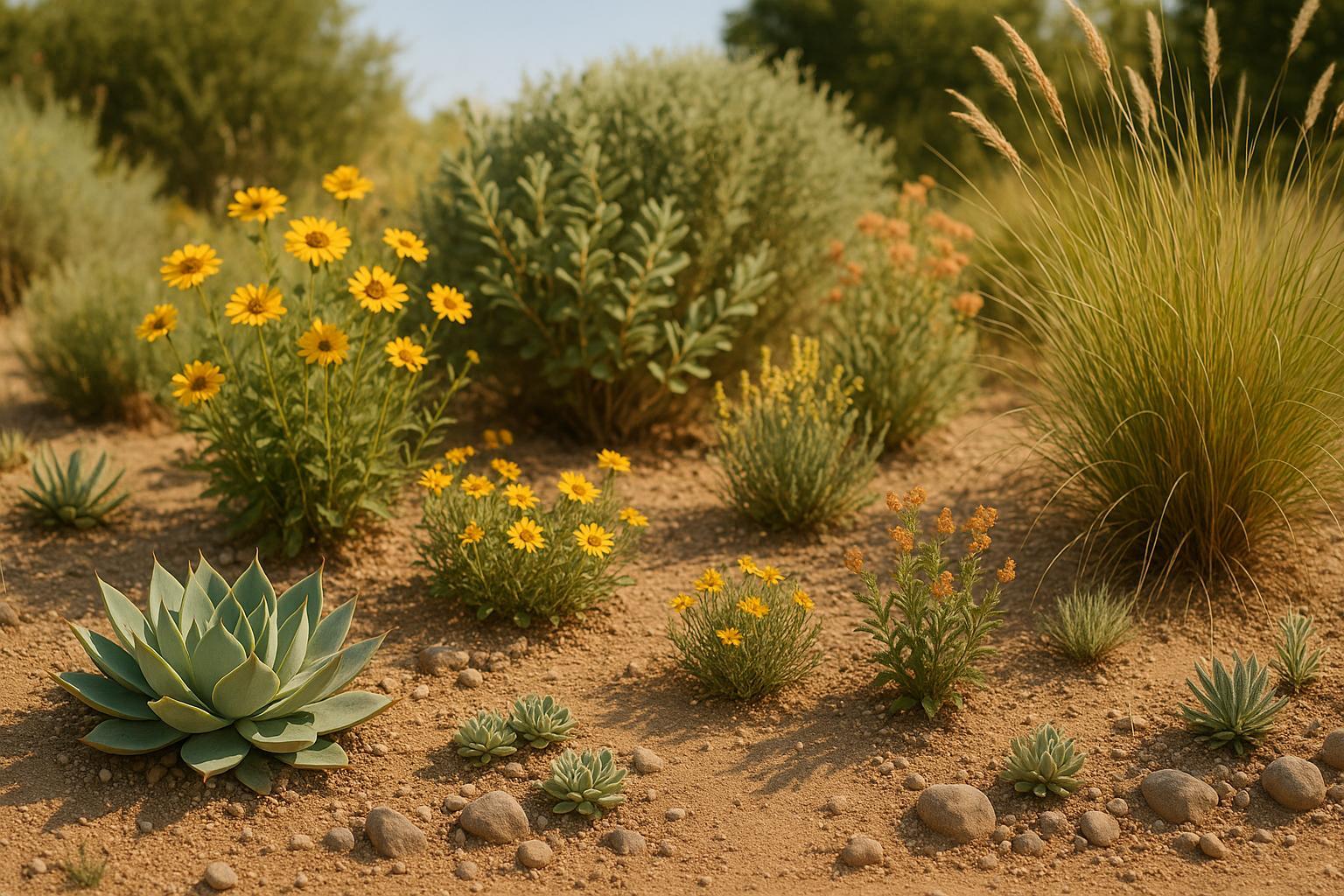
How AI Recommends Drought-Tolerant Native Plants
Explore how AI tools can help you select drought-tolerant native plants tailored to your garden's unique conditions and promote sustainable gardening.
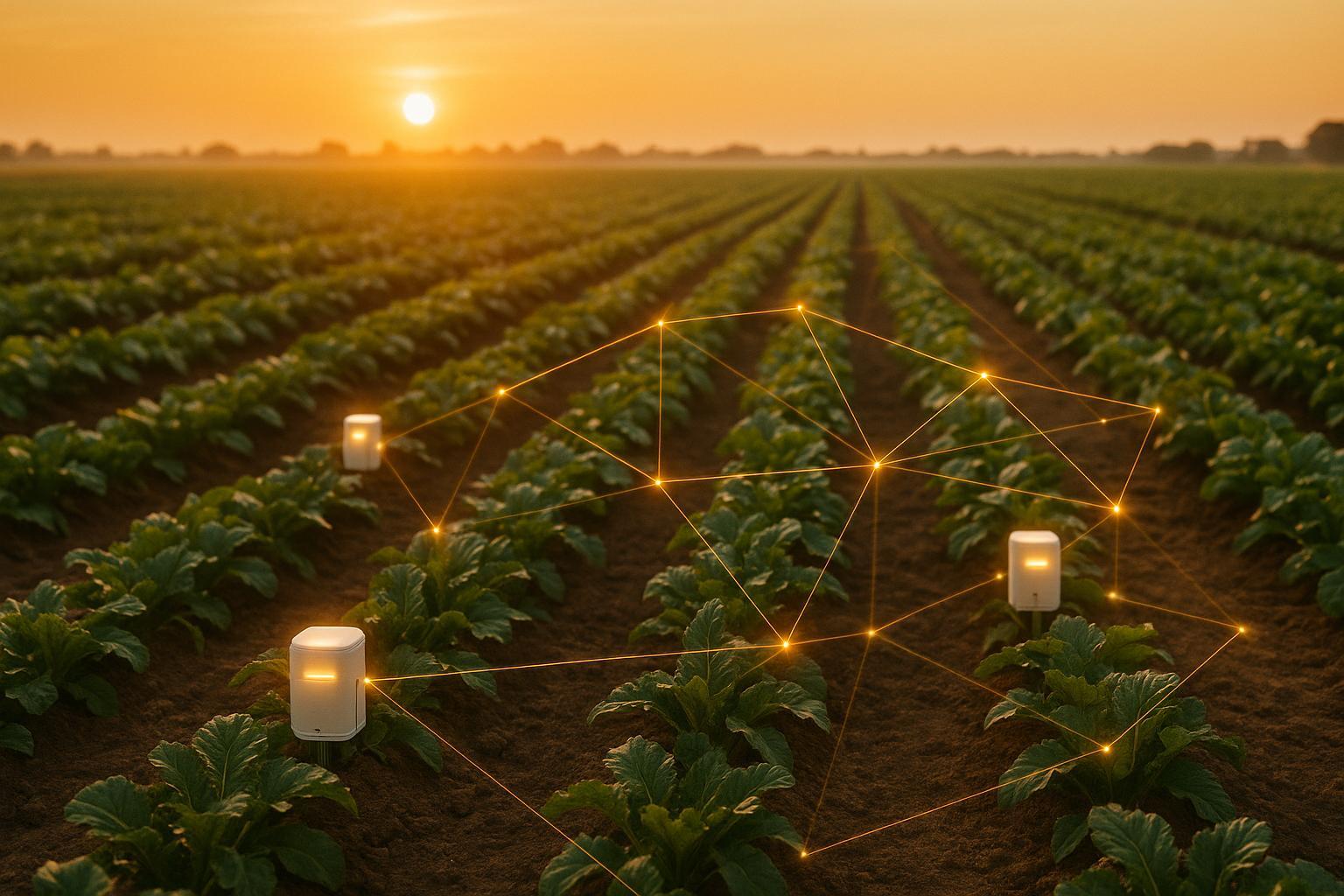
IoT Pesticide Networks: Data Security Risks
Explore the cybersecurity risks facing IoT pesticide networks in agriculture and discover effective strategies to enhance data security.
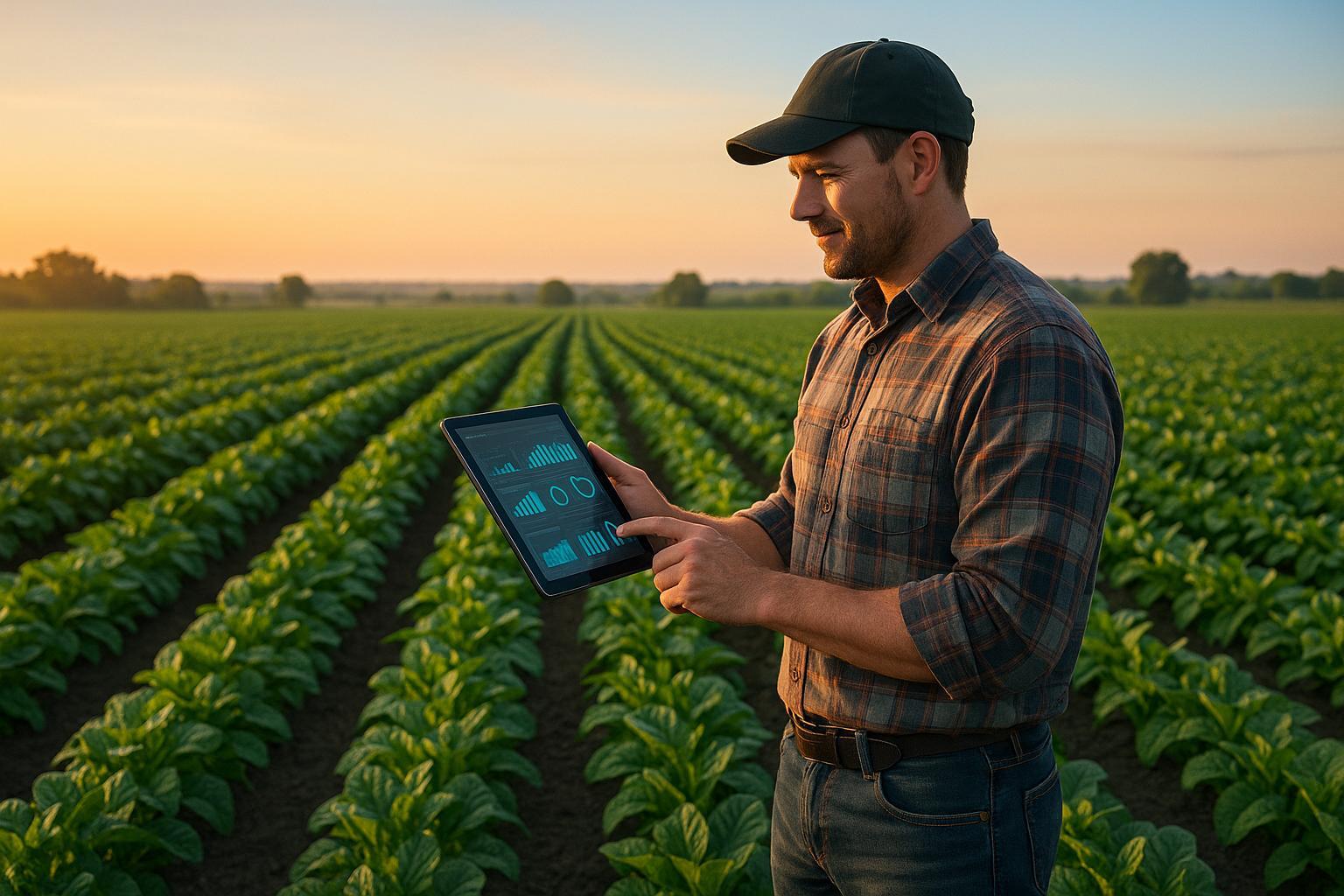
How Climate Data Improves Planting Decisions
Explore how climate data and AI are transforming planting decisions, enhancing crop management, and boosting productivity in gardening and agriculture.

AI Pest Identification vs. Traditional Methods
Explore how AI pest identification outperforms traditional methods by enhancing accuracy, speed, and environmental sustainability in pest management.
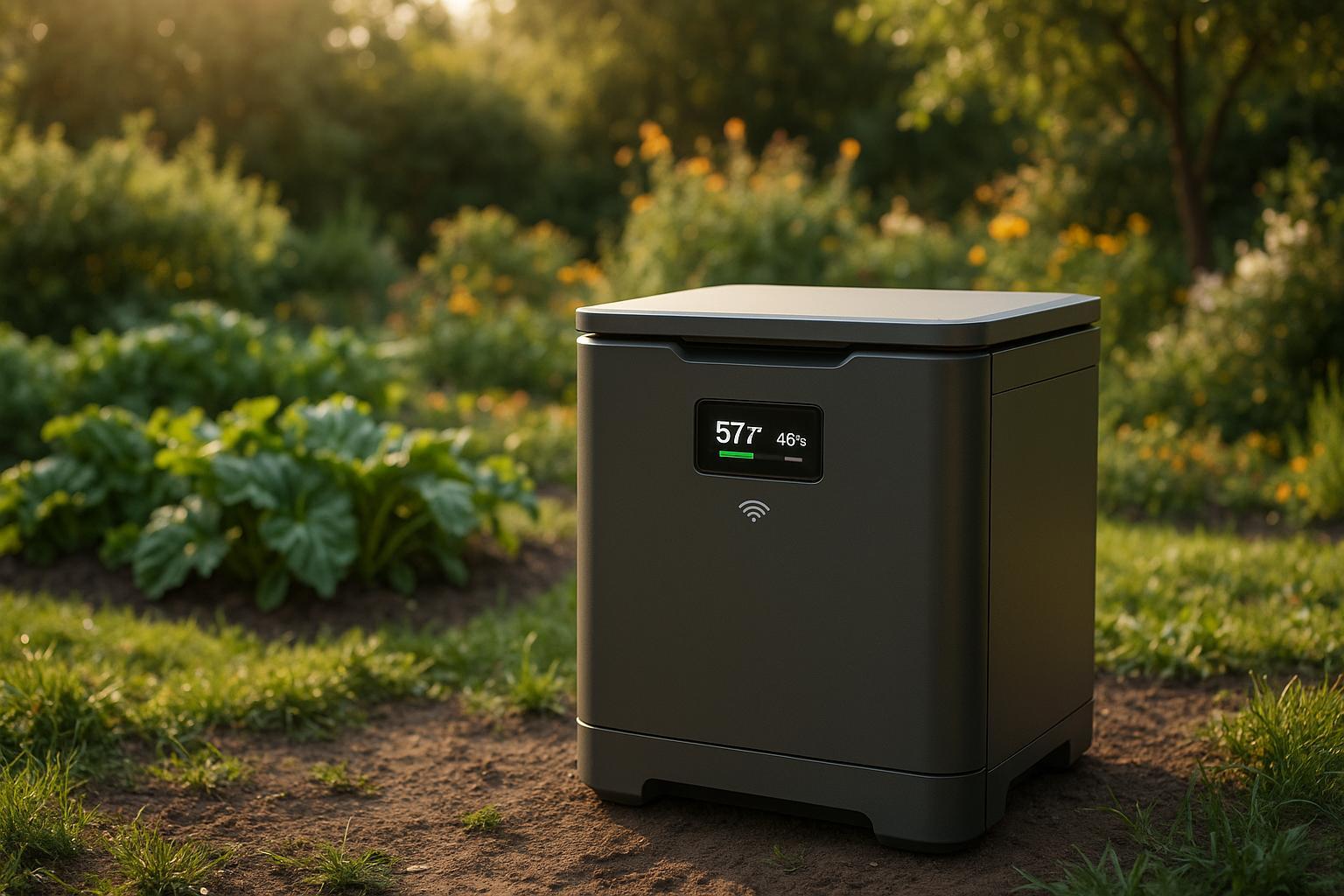
Ultimate Guide to IoT-Integrated Composting Systems
Explore how IoT-integrated composting systems automate monitoring to enhance compost quality, speed up the process, and reduce environmental impact.